Ni hao from Beijing, China! If you’re wondering why I’ve been a bit quiet lately, it has somewhat to do with the fact that I’ve just spent the week here in Beijing at a road safety conference (where I presented a paper on the relative safety of cycling vs driving). While much of my time has been spent in the conference hotel, I have managed to get out and have a look around the city. And my hotel room window also has a birds-eye view of the adjacent intersection, which makes for interesting viewing to a traffic engineer!

China is of course known for its bicycle culture, although that has somewhat come under threat from an increasingly motorised population. In a city like Beijing, with 20 million people, already that means the roads are clogged with traffic and limiting the space for cycles. It is notable too that e-bicycles probably outnumber ordinary bikes here too now.
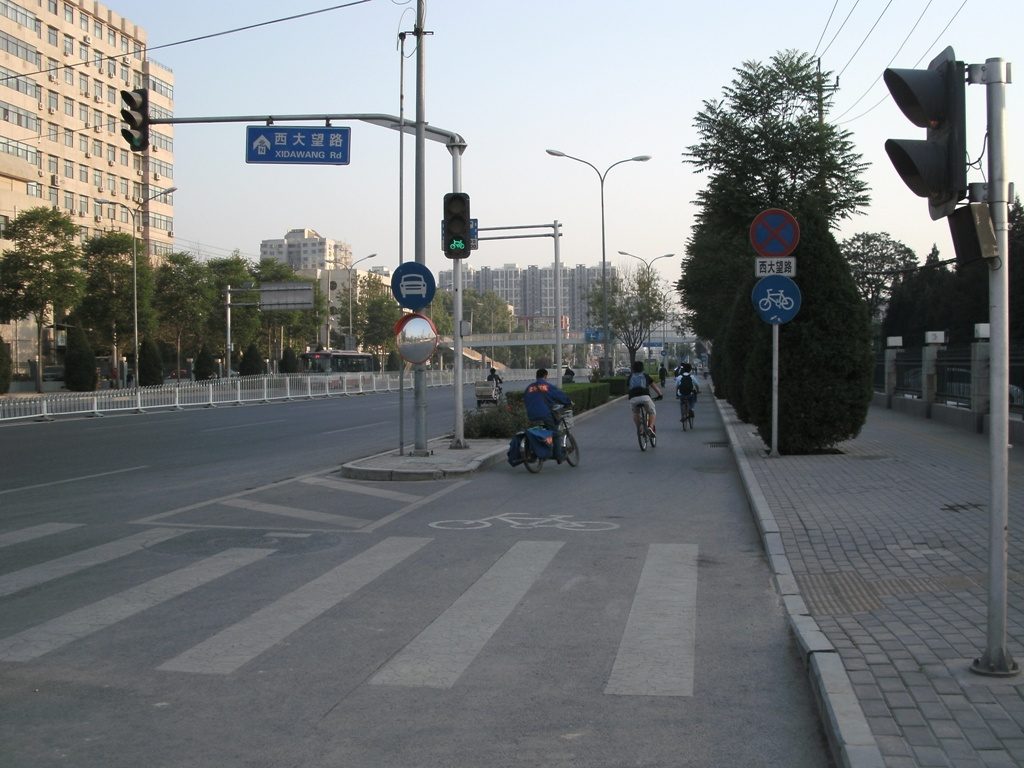
Fortunately Beijing is fairly well provided for in terms of wide cycle lanes, and in many cases these are separated from the main roadway by either a kerb or some little fencing. However these bikeways are often treated as “service lanes” for just about anyone who wants to use them (e.g. cars looking to park or pick-up/drop-off), and any vulnerable road users (e.g. three-wheelers, motorbikes, e-bikes, and even displaced pedestrians) typically call them home as well.
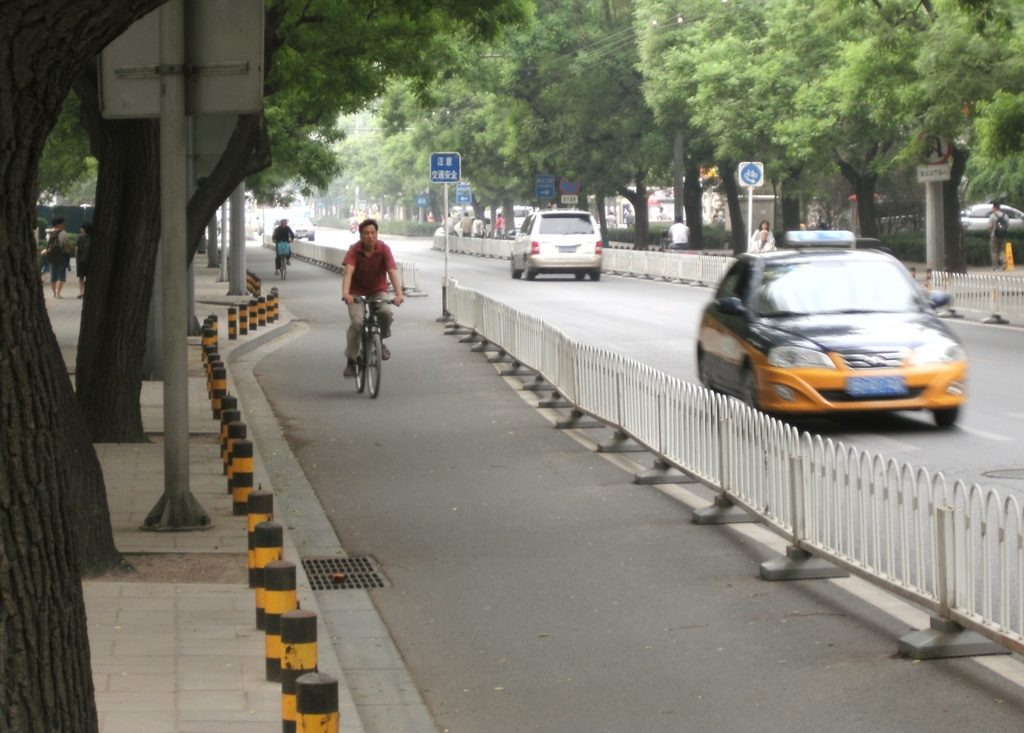
It’s interesting to note too that, although bikeways or cycle lanes are typically provided on both sides of main roads, they don’t always get treated as one-way facilities. If it’s a convenient way for a bike (or just about anyone smaller than a car) to get from A to B they’ll just do it… It looks anarchic (and downright hair-raising at some busy intersections where road users are just nudging their way in between each other from all directions) but this “passive aggressive” approach tends to work because everyone stays aware of those around them.
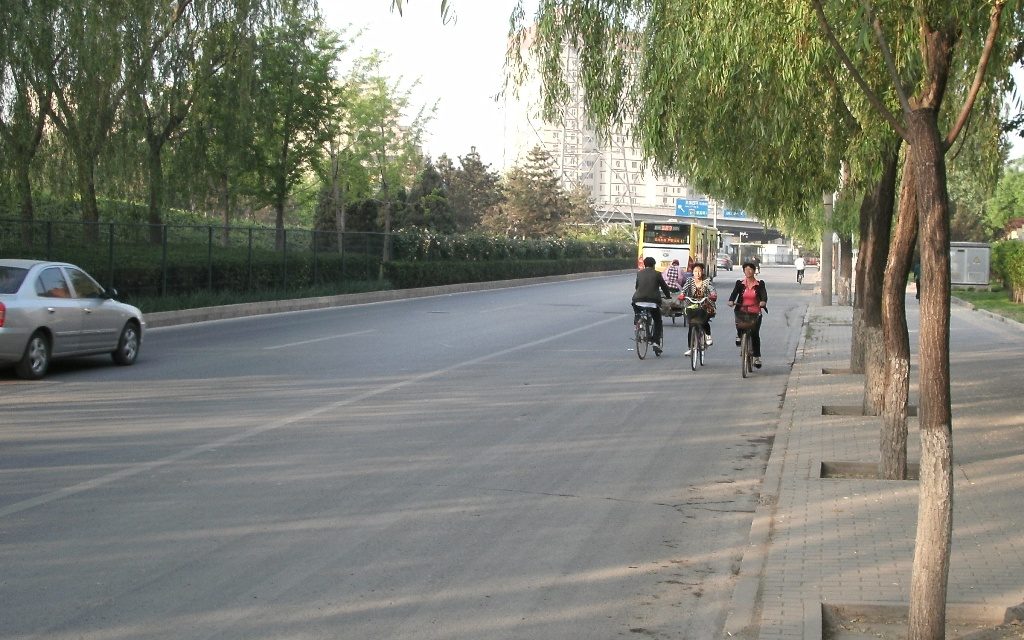
Although the motor traffic is ever-present, there are still a huge number of cyclists (for NZ anyway) getting around the streets. As well as those going from A to B, that also includes delivery riders (often with interesting cargo bikes), personal “taxis” for tourists, and various service workers such as street/path cleaners.
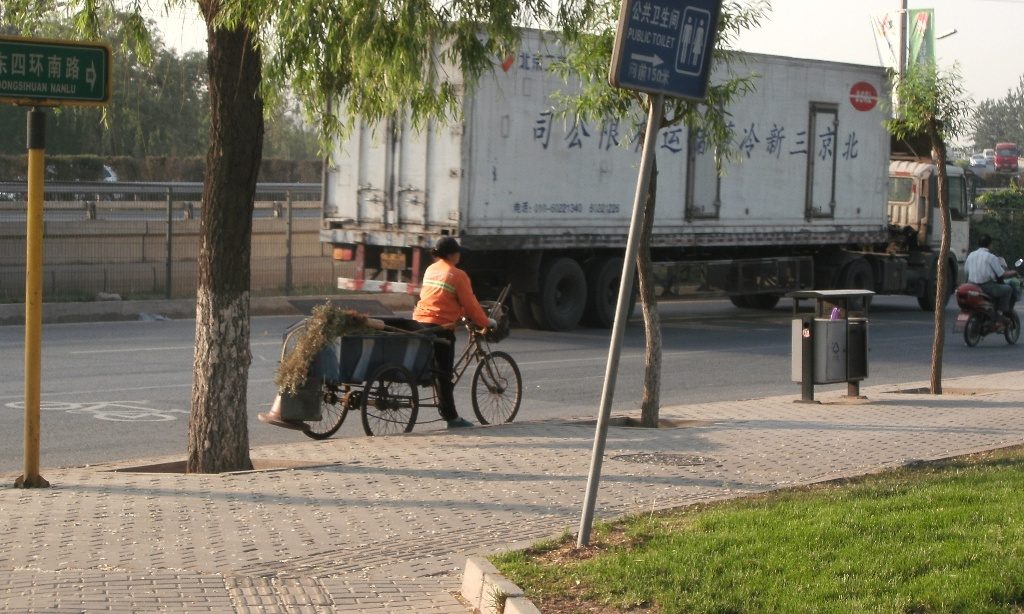
There’s even public hire bikes around the city; I’ve noticed a couple of stations full of shiny bikes (not many used it seems). If I could have figured out the registration / payment system I would have been sorely tempted to give one a try to get around – everything is very far to walk to in a huge place like Beijing (I highly recommend the subway though – crowded, but only NZ40c a ride).
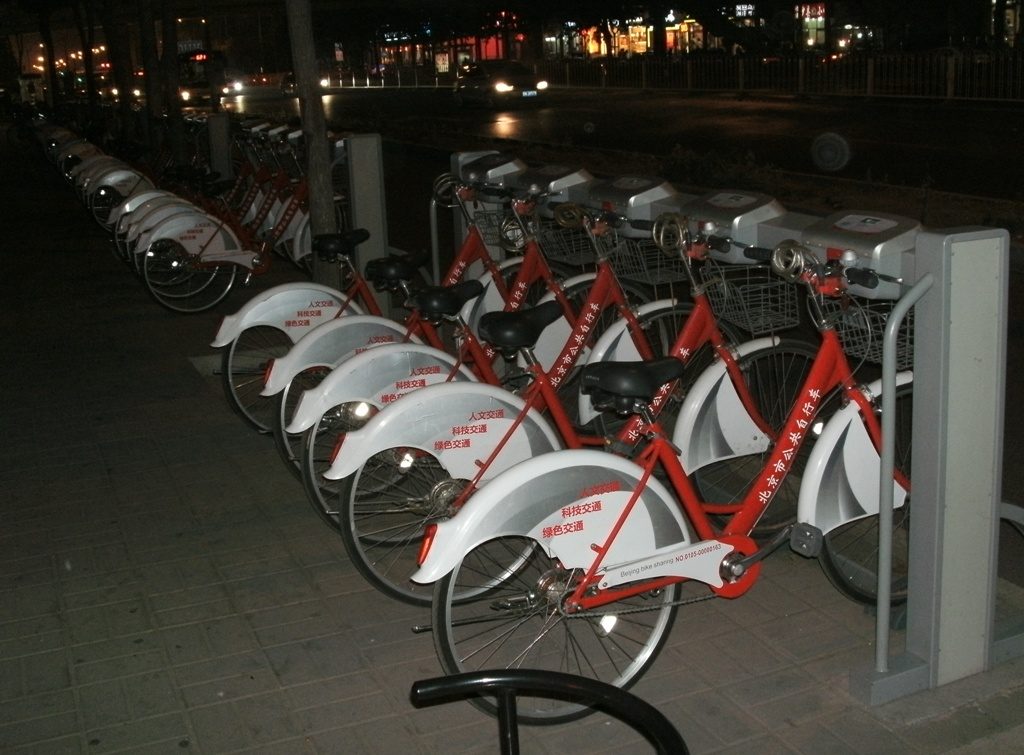
So are there any lessons from Beijing for Christchurch? Well the informality of how people use the bike facilities (or lack of) is very refreshing. Given our “transition city”, we could use some of that informality to just create some interim cycling facilities (e.g. contra-flow, separated) that may not necessarily be completely to “proper” design standards, but will probably work just fine while we’re still rebuilding the city. And the key for how those cycling movements (and traffic manoeuvres in general here) are for the most part safe (despite appearances) is because everyone looks out for each other while on the road – something we could all do well to remember.
Zai jian!

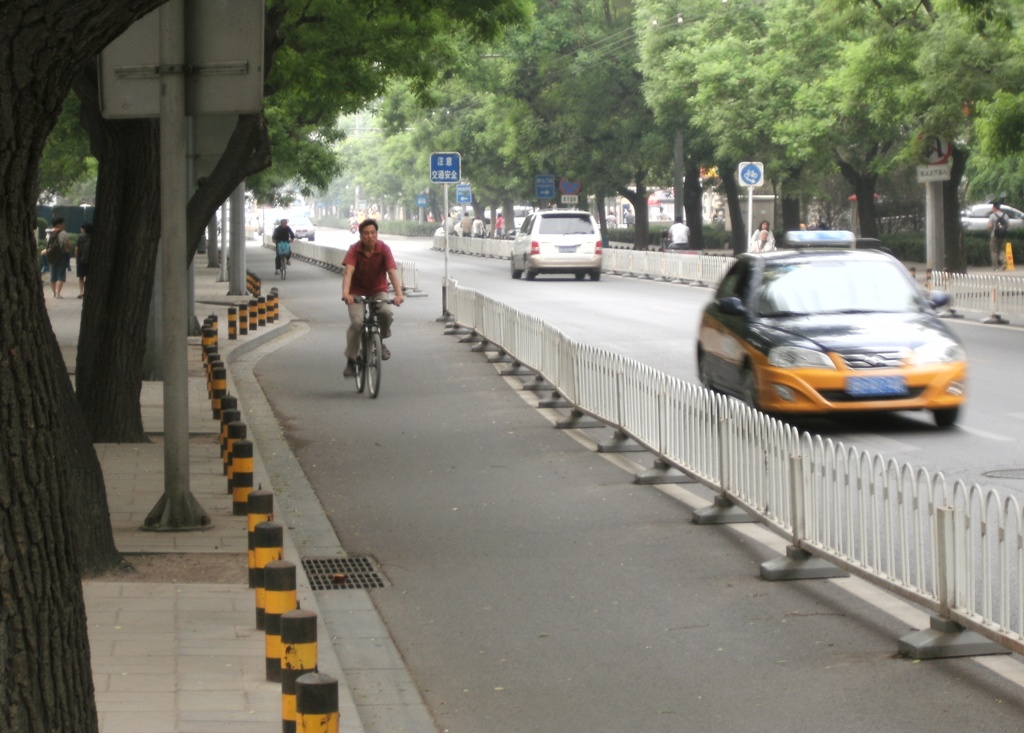
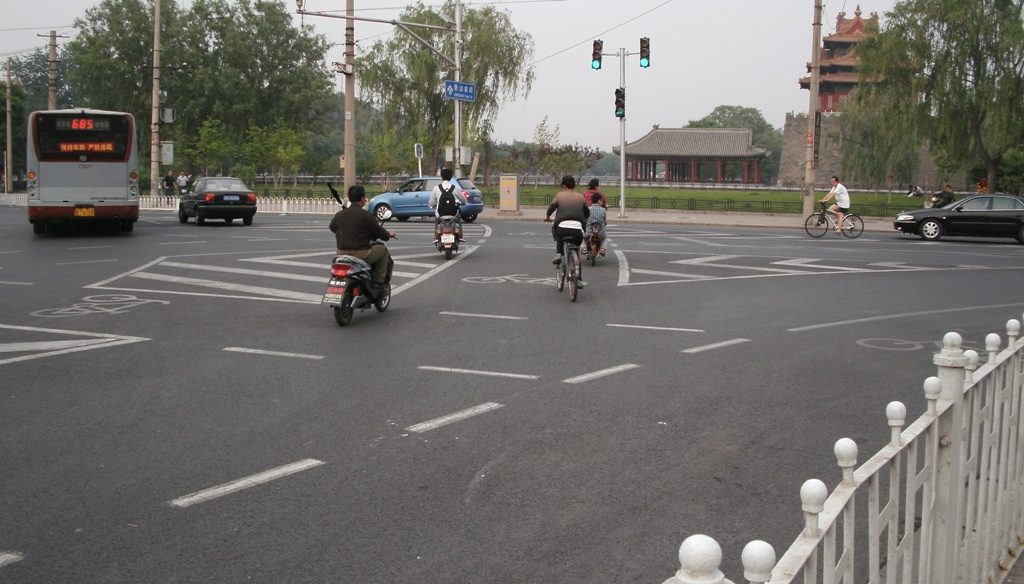
Thank you for describing how it is up to all of us to make our infrastructure work. Personal responsibility for our actions can result in even rather horrible road conditions being workable. Can this work here? Are Cantabrians up to the challenge of personal responsibility? I think most are. The need is for enforcement, both police and social pressure, to bring the scofflaws into compliance. We came together in response to the quakes. Let’s apply the same attitude to the social change of active transport doing its bit to make all of our lives better.
I tend to agree with you Dirk . I know the enthusiasts for completely separated cycle lanes believe that 1 proper cycle-way is better than 5 bad ones. I think that with some minor structural changes to our dangerous intersections , a lot of painted lines and red and green colours , plus a good education campaign and some enforcement ,the budgeted $70m could well cover the whole city . I spend a bit of time planning routes along quiet streets to go on , and with care , and confidence it is surprising just how cycle safe many of our streets can actually be . Of course we probably wouldn’t need much extra at all if the 50km speed limit was enforced and adhered to . I think a bit of smart thinking could well provide cost-effective outcomes when compared with fancy structural engineering . More likely to change motorist behaviour as well .
I agree with you both. Sometimes there’s just no quiet street option with motorists avoiding congestion making them more dangerous.
I’d love to know what NZTA have planned for Brougham St, at the moment all the little sections of cycle lane they’re putting in and parked cars between make the wide empty footpath the obvious choice.
I’m not sure if it’s a precedent but the new Wright’s Rd cycleway crossing has claimed the short section of footpath to Hillmorton St,
Spot the bicycle in Hanoi…
http://www.youtube.com/watch?v=Gf8_lzCWvq4
How odd. Your second photo features the bridge I cross to get to and from work.. You were on the ‘top’ side of a t-intersection looking north and directly behind you as you took the photo was the entrance to a construction site where a station on the future subway Line 14 is being built. Your picture of the street cleaner looks like it was taken on the side of the Sifang Qiao interchange on the southeast side of campus. I wonder if your conference was at my university? I also wonder if your “one way service road” is actually the southbound side road of the East 4th Ring Road as it wind around the Sifang Qiao interchange…
Very few of Beijing’s cycle lanes are actually separate. Although, yes, motorists certainly do encroach on dedicated cycle lanes, most of those side roads provide both a cycle lane and access to buildings, courtyards, campuses, estates, parking, whatever for motorvehicles, too. Generally one drives a lot slower down those side roads….
I think you hit the nail right on the head, though, when you talk about awareness or expectation. Beijing’s traffic is pretty chaotic when compared with NZ, but the fact that drivers expect bike, trike, and all kinds of electric or lawnmower motor powered variations on the bi- and tricycle them to be in any random position moving in any random direction at any speed from dead slow to surprisingly swift. That and massive investment in public transport is probably what NZ (not just Christchurch) could probably learn from Beijing.
Oh, and those public hire bikes don’t seem to be well used around this part of town, and my impression is the registration process, especially for us foreigners, lives up to the stereotype of Chinese bureaucracy (which is frustrating considering how many other things are super-efficient), but they are used. I’m not sure of the business model, though, considering how rampant bicycle theft is here. Anyways, another good idea Christchurch could certainly borrow – after all, Christchurch is also a city built on a plain next to the hills, much like Beijing.
Small world! Yes, I was at the Beijing Uni of Technology for my conference, so some of those photos were from a walk “around the block”. Thanks for your extra insights too. A new subway station there would be great too – it’s currently a bit of a walk to the nearest one!